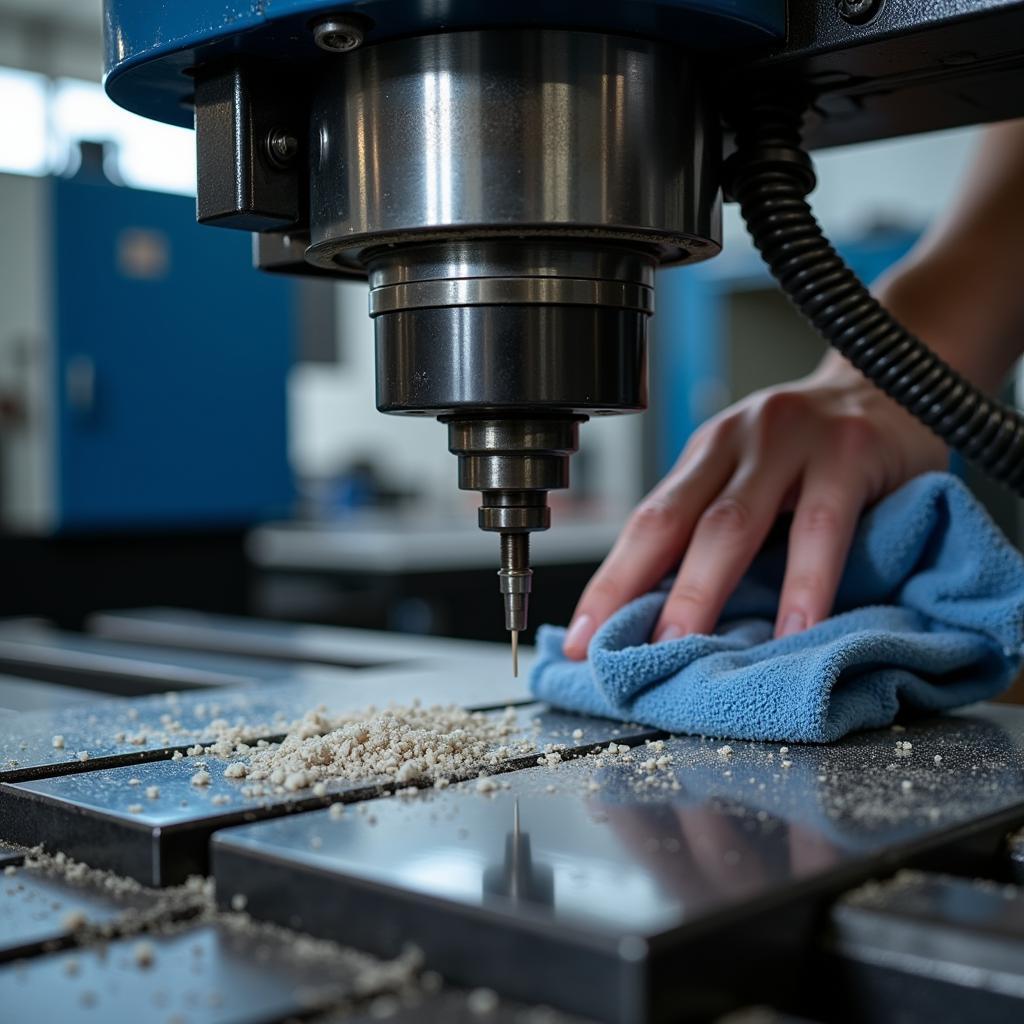Care and maintenance of machine tools is crucial for ensuring their longevity, precision, and optimal performance. Neglecting these essential practices can lead to costly repairs, downtime, and compromised product quality. This comprehensive guide will delve into the best practices for maintaining your machine tools, covering everything from daily cleaning to preventative maintenance schedules.
Why is Care and Maintenance of Machine Tools Important?
Proper care and maintenance of machine tools offers numerous benefits, impacting not only the machinery itself but also the overall efficiency and profitability of your operations. Regular maintenance prevents premature wear and tear, extending the lifespan of your valuable equipment. Additionally, well-maintained machines operate with greater precision, leading to higher quality products and reduced scrap rates. Downtime, a significant cost factor in any manufacturing setting, is minimized through proactive maintenance. By addressing potential issues before they escalate, you can avoid costly repairs and production delays. care and maintenance of tools and machinery
Daily Maintenance Practices for Machine Tools
Daily maintenance routines are the foundation of a successful care and maintenance program. These simple yet effective practices can significantly impact the long-term health of your machine tools. Start each day by cleaning the machine, removing chips, debris, and coolant residue. Lubricating moving parts is essential for reducing friction and wear. Check coolant levels and top them off as needed. Inspecting tools for wear and damage is crucial for preventing accidents and ensuring accurate machining. At the end of each shift, clean the machine again and cover it to protect it from dust and other contaminants.
Preventive Maintenance for Machine Tools
Beyond daily routines, preventive maintenance schedules are vital for addressing potential issues before they become major problems. These schedules should be tailored to the specific type of machine tool and its usage. Typical preventive maintenance tasks include:
- Inspecting and replacing worn belts and filters.
- Checking and adjusting alignment and backlash.
- Calibrating the machine to ensure accuracy.
- Performing periodic lubrication of critical components.
- Conducting thorough inspections for signs of wear or damage.
“Preventive maintenance is an investment, not an expense,” says John Miller, a seasoned mechanical engineer with over 20 years of experience. “By proactively addressing potential problems, you can avoid costly repairs and downtime, ultimately saving money in the long run.” best lawn care tools to own
Troubleshooting Common Machine Tool Issues
Despite diligent care and maintenance, machine tools can still encounter problems. Understanding how to troubleshoot common issues can help you quickly diagnose and resolve them, minimizing downtime. Some common problems and their potential solutions include:
- Excessive Vibration: This could indicate imbalance, worn bearings, or loose components.
- Poor Surface Finish: Check for dull or damaged tools, incorrect cutting parameters, or inadequate lubrication.
- Overheating: Verify coolant levels, inspect cooling systems, and check for excessive friction.
- Inaccurate Machining: Calibration issues, worn components, or backlash can contribute to inaccuracies.
Conclusion
Care and maintenance of machine tools are essential for ensuring their longevity, precision, and optimal performance. By implementing a comprehensive care and maintenance program, including daily routines and preventive maintenance schedules, you can protect your investment, enhance productivity, and maintain the highest quality standards. nail care tools and equipment drawing
FAQ
-
How often should I lubricate my machine tools? Lubrication frequency depends on the specific machine and its usage. Consult the manufacturer’s recommendations for guidance.
-
What type of coolant should I use? The appropriate coolant type depends on the material being machined and the machine itself. Refer to the manufacturer’s specifications.
-
How can I prevent rust on my machine tools? Regular cleaning, proper lubrication, and covering the machine when not in use can help prevent rust.
-
What are the signs of a worn-out bearing? Excessive vibration, noise, and overheating can indicate a worn bearing.
-
How often should I calibrate my machine tools? Calibration frequency depends on the machine’s accuracy requirements and usage. Consult the manufacturer’s recommendations.
-
What should I do if my machine is overheating? Check coolant levels, inspect cooling systems, and look for excessive friction. If the problem persists, contact a qualified technician.
-
How can I improve the surface finish of my machined parts? Ensure sharp tools, correct cutting parameters, and adequate lubrication.
Other Helpful Resources on DiagFixPro:
Need assistance with your car diagnostic tools? Contact us via WhatsApp: +1(641)206-8880, Email: [email protected], or visit us at 910 Cedar Lane, Chicago, IL 60605, USA. Our customer service team is available 24/7.

